Microwave ovens are great, really useful, very efficient. I'm sure we've all learnt about how they work - microwaves gets water molecules dipoling creating heat and all that - but what do they actually look like inside? Well I had just recently upgraded our 15 year old microwave and was about to drop it in the bin when I thought, "I know, I will take it apart to see what it looks like, take some photos and write a story" - as you've come to expect from me ;)
Quick disclaimer before we start: there are big voltages and big capacitors inside microwaves; they can be dangerous even after they've been turned off. This story is for interest and amusement only; don't do anything silly now...
The plate stamped on the back (no, not the one that says "do not open, dangerous voltages inside, you might die" etc) said it was 1250W 5.3A 240V, with an IEC705 rating of 750W, which is the effective microwave power. This gives an efficiency of 60% which is actually pretty good in the scheme of things. The info plate also told me "2450MHz" which is obviously the frequency. This is a "nice" microwave frequency that has been shown to be more or less harmless to humans, at low power that is. That is why frequency ranges around 2.4GHz are very common - mobile phones, wireless networking, microwave ovens. Not to mention that frequency is open licenced, ie, anyone can use it without a permit.
Anyway, here is a look with the cover off. You can see on the right a fan to suck air through the magnetron - the microwave frequency generation unit. The thing with the panasonic sticker on the back; dont' worry, we'll get to it.
Underneath the magnetron is a big transformer. I can tell you it is about 75% of the weight of the microwave, it is *heavy*! You can see it is connected to a big capacity under the fan and there is a diode lurking about too. A magnetron works on high voltage DC power. I won't go into the operation of a magnetron, lets just say that it is a vacuum magnetic resonance chamber that exites electrons at the microwave frequency. You've got Google, look it up!
Note that the transformer is directly connected to the magnetron, and the primary winding (bottom left of transformer) is connected to the control board. It pretty simple really, on the control board there is a relay which puts 240VAC onto the transformer, which in turn kicks up the voltage to around 3000VDC (judging from the capacitor information plate) to the magnetron when microwave power is required. How easy is that? The tricky part, that is, the rest of the oven, is making sure nobody gets "nuked" by microwaves when the door is open!
Now being in the control systems game I was interested in the safety systems installed. I was pleasantly suprised, it is quite robust. On the top right you can see the unit is 240VAC fused on the active side (brown wire), and the neutral (blue) comes back through a 240VAC temperature switch on top of the magnetron. Hardwired temperature interlock - nice. If the magnetron temperature exceeds a certain temperature the incoming 240VAC is immediately dropped until the temperature returns to normal. This might seem a bit abrupt but this is an example of a primary interlock. See there is a black wire running off the top of the picture; this goes to a thermocouple on the the case to sense temperature for the control module - a secondary interlock. Normally the control system will monitor the temperature and in a controlled manner it will shut the power down on a high temperature signal. However if the control system is broken then the fallback is the primary interlock, a simple power dropping temperature switching device.
Continuing on with the safety systems you can see here there is not one but 3 door limit switches. Looking at the information on the limit switches there were 2 low voltage DC, one normally open one normally closed. The other switch was 240VAC normally closed. I decided this was another primary/secondary redundant system - the two low voltage switches are input signals to the control module and the 240VAC switch is a hardwired interlock with the magnetron. In the control module, in order to turn on the magnetron, one switch has to be made the other not made (because one is NC the other is NO) ie - shut the door! But a hardwared backup in case of control module failure is the 240VAC switch which must be also made - if the door is opened but the control module is stuck on "go go go" then the 240VAC signal to the magnetron is forceably disconnected.
Anyway, for the heart of the microwave, here is the magnetron. Not quite like I expected - I guess that is why I took the oven apart. You can see the beam gunbarrel in the picture, it is the waveguide that steers the microwave beam into the oven. Hexagon shape, interesting. I'm sure there is a reason for that!
Now the concept of a fine beam of microwave seemed a bit unsual until I started thinking about it. For starters the food is rotating so it is not a just single beam drilling into one spot; secondly if any microwave energy is not initially absorbed by the food, it will hit the metal wall and be deflected off in a different direction and keep bouncing around inside the oven until it is finally absorbed by something.
Now - what about the front window mesh you say? At 2.45GHz, the wavelength is c/2.45x10^6 (where c = speed of light ie aroud 3x10^8) so 122mm. That's why microwaves can't get through the mesh on the front window, they are too big. It is like trying to throw a tennis ball through a flywire door. Microwave ovens are what is known as a Faraday cage, where the target microwave frequency cannot penetrate the boundaries; being either walls of metal or fine meshes of metal.
"But it is metal, putting metal in a microwave is bad". Well only if it is shaped like a microwave antenna, which can be pretty much any shape. Metal will "receive" the transmitted microwave signal and heat up or worse, arc across itself due to the high voltages that are induced. A flat sheet of metal (or meshed metal) won't receive the signal and instead reflect it.
The magnetron is not a superconductor so there will be losses in resistive heat as those electrons are wizzing around inside it. The plates of metal are cooling fins, if you remember back to the first photo a fan blows air across them.
Note the permanent magnets on either end of the magnetron cavity section. The inner workings of a magnetron require magnetic fields so I guess rather than being a wound electromagnet they use permanent magnets instead. Google - look it up.
The brains of the oven, basically a user interface, safety system and a cook on/off switch. This particular oven is a "chopper" circuit, that is, it switches between off and on with variable times in between. You can see by the relay near the transformer on the main board for putting 240VAC onto the magnetron transformer as required. I'm suprised it isn't solid state, it would have to be a pretty good power relay to handle the back emf of the transformer. An inverter microwave over doesn't use a switch or a transformer, it uses high power electronics to kick the voltage up to the required level - but can vary either the frequency or the voltage to generate a only a little bit or a lot of microwave power. You will know if you have an inverter microwave oven - did I mention how heavy the transformer is? ;)
There are other subtle things I'm sure running in the control board - monitoring the thermocouple temperature, turning the internal light on and off, spinning the carousel forwards *and* backwards...but, eh. Control systems are my day job.
Speaking of the carousel here it is. A simple motor on the bottom. Well maybe not that simple, it is a 240VAC motor with a gear down drive. It probably has its own overtorque control too. Okay, the overtorque control is probably a plastic gear that can click past the main drive if the carousel is jammed, but that still will prevent the motor from burning out on overload!
Well there you have it, one microwave oven dissected for your viewing pleasure - and a bit of commentary to boot. Some of it might even be true! I put all the useful parts from it into my shed box of "electronic doo-dads" and dropped the rest into the bin to go back to the earth whence it came. I kept the magnetron and transformer especially; maybe one day I might fire it up on the bench and see if I can cut a hole through a coke bottle or something. Or maybe not, sounds a bit dangerous and I've gone soft in my olde age ;)
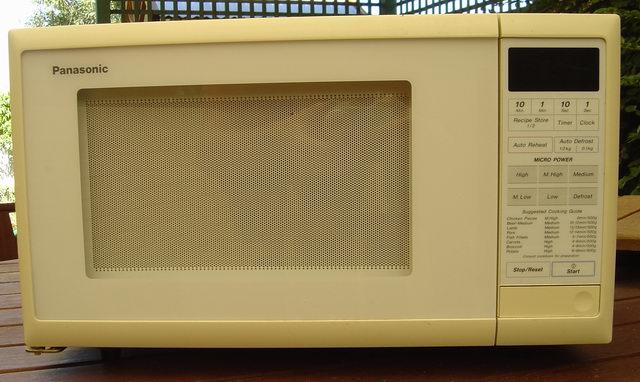
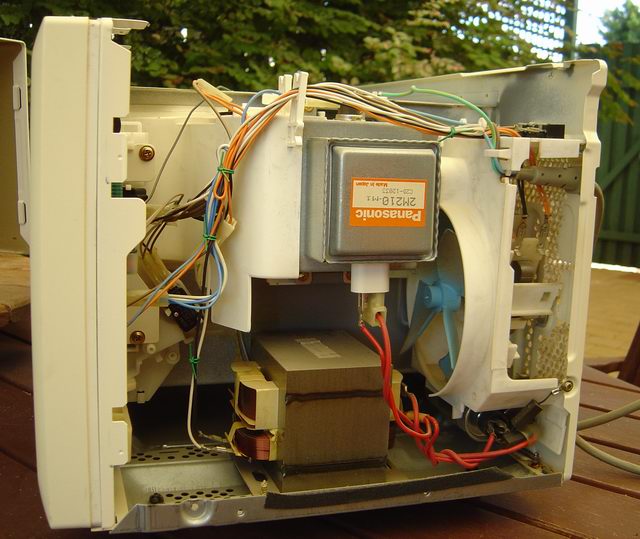
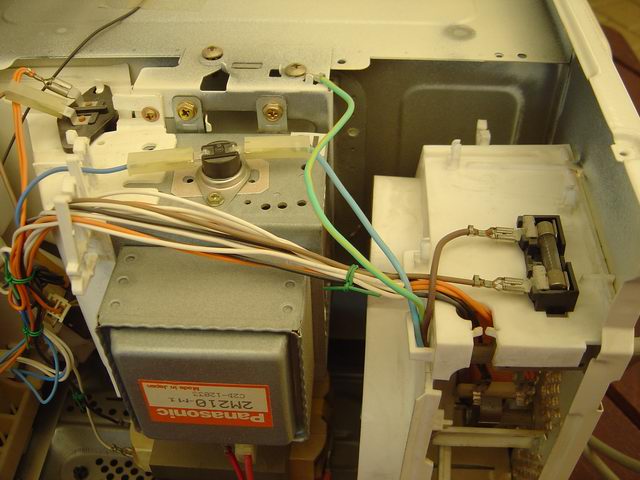
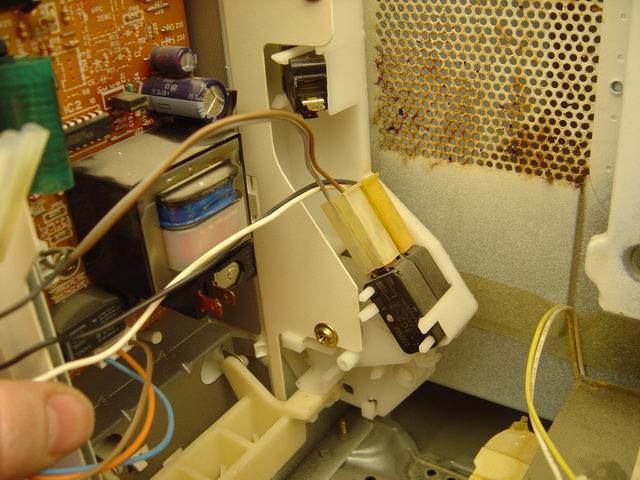
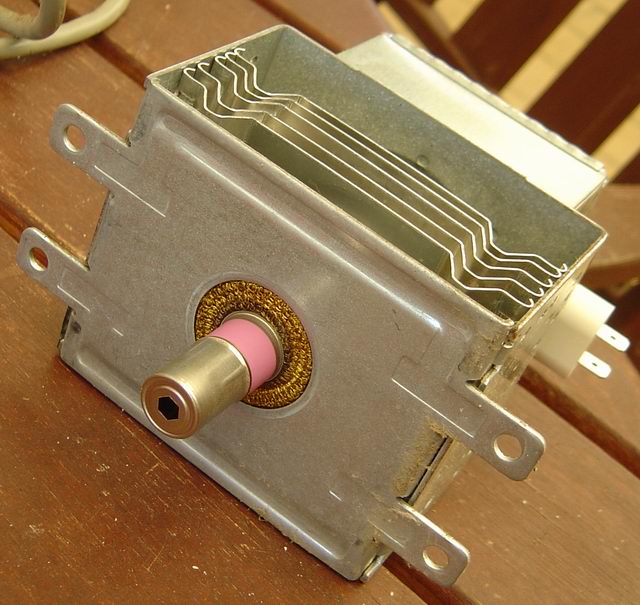
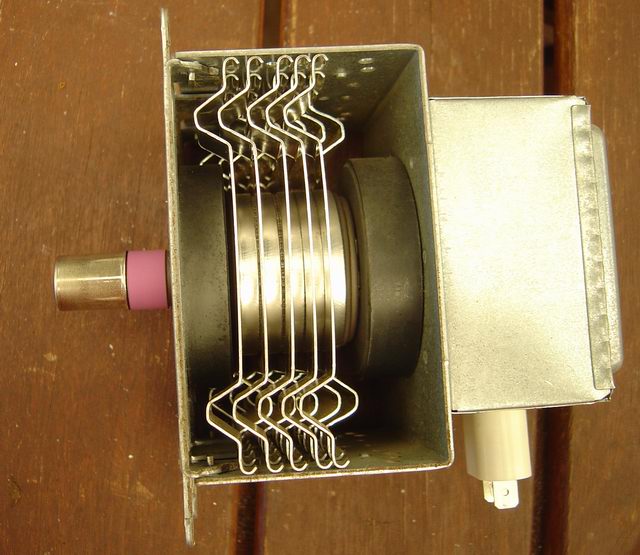
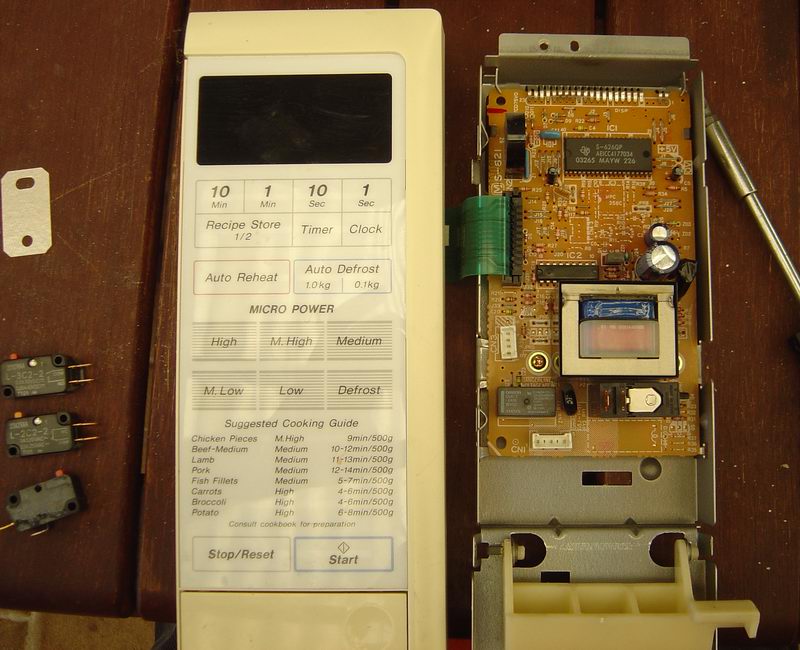
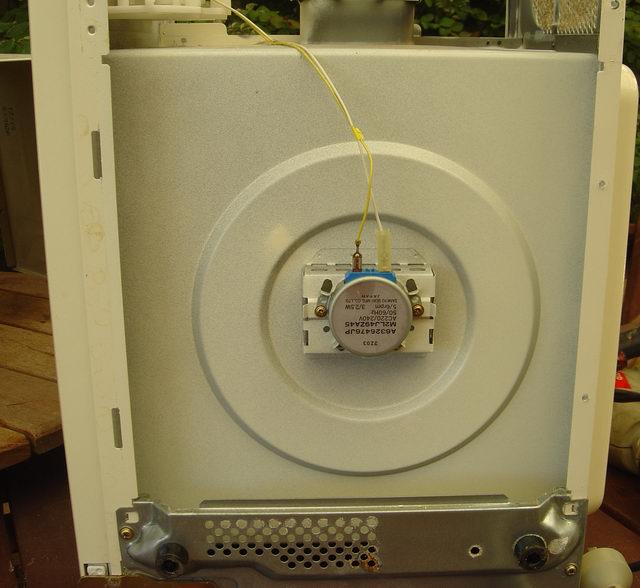








 database
database